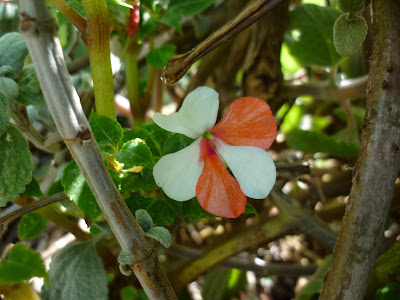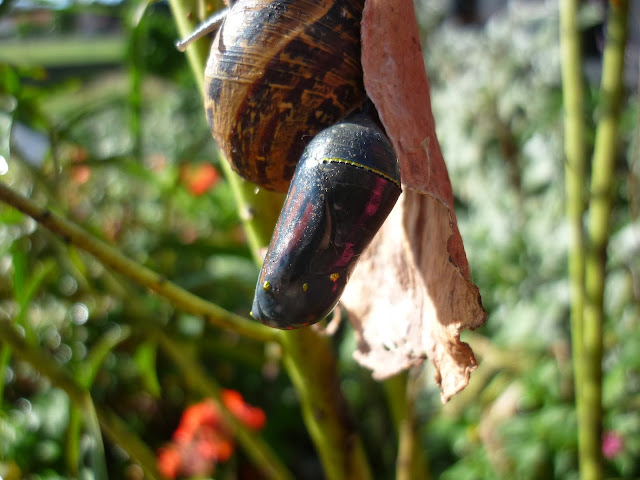 | |
| Can you see the caterpillar skin? This is a chrysalis we found on a stalk of lavender. |
 |
| We wonder what the black marks on the chrysalis are and if they will affect the butterfly. |
 |
| The paper wasp is after nectar. Look at the segments on its legs. |
 |
| The other end of the paper wasp. |
 |
| Another butterfly hatches. |
 |
| Can you see how its wings are crumpled up to start with? It takes a while for the fluid to spread to all parts of the wings, so they are strong enough to fly. |
 |
| Too many aphids! |
 |
| Watch out aphids! Here comes a ladybird. |
 |
| Two lady birds. Are they herding aphids? |
 |
| We had to rescue this chrysalis because the caterpillar attached itself to a dead leaf - which then fell off the plant. Can you see the butterfly forming? |
 |
| Can you see the bee piercing the flower to get the nectar? |
 |
| Just because we like the look of this flower. |
 |
| Another lady bird on the look out for aphids. |
 |
| The snail moves along. |
 |
| It must be very cramped in here! |
 |
| Jason took a fantastic photo of a bee piercing the flower to get the nectar. Maybe the flower is too long for the bee to get the nectar any other way? |
 |
| This is a fantastic photo, Jason. You could be a nature photographer. |
 |
| Can you see the hole the bee left? |



No comments:
Post a Comment